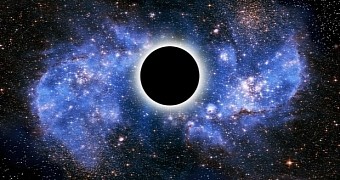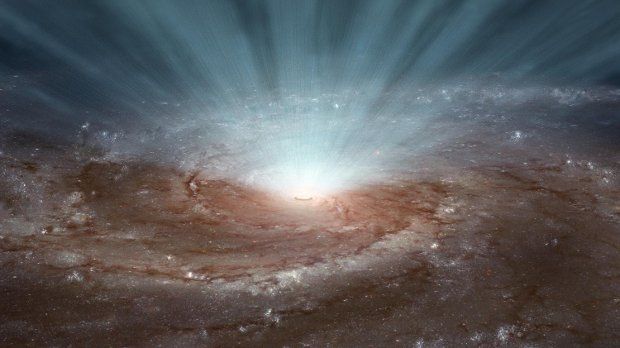In a report in the journal Science, scientists detail how, using NASA's Nuclear Spectroscopic Telescope Array and ESA's XMM-Newton telescope, they managed to gain a better understanding of the winds black holes produce when feeding.
In a nutshell, the astronomers behind this investigation say that, according to telescope data at hand, these cosmic burps that black holes let out every once in a while move away from their source in all possible directions, as shown in the image below.
More precisely, it appears that the winds originating from black holes do not leave their source in the form of beams, as some might assume. Instead, they move away from their point of origin in what is best described as a spherical shape.
How black holes transform their home galaxies
Astronomer Fiona Harrison says that, as shown by previous studies carried out over the years, black holes love and adore feeding on matter. While busy satisfying their appetite, they occasionally let out strong winds.
“We know black holes in the centers of galaxies can feed on matter, and this process can produce winds. This is thought to regulate the growth of the galaxies,” the California Institute of Technology scientist explains, as cited by Phys Org.
While studying PDS 456, which is a black hole located at a distance of over 2 billion light-years from Earth, astronomer Fiona Harrison and colleagues found that cosmic winds originating from such space regions move outwards in all directions and, in doing so, shape their host galaxy.
Thus, it appears that PDS 456, together with other black holes similar to it, can sustain winds that carry the energy equivalent of over one trillion suns each and every second. These winds can push gas out of a galaxy and, in doing so, forcefully shut down star formation processes.
The bigger a black hole gets, the stronger the burps it produces. As a result, its home galaxy will lose gas at a faster rate. Eventually, the galaxy will be left with too little gas to be able to birth any new stars, astronomers explain in the journal Science.
Why this investigation matters
First off, it must be said that, just like the majority of its siblings, our home galaxy, the Milky Way, has a black hole tossing and turning at its core. If this hole is transforming our cosmic neighborhood, it's safe to assume that we would all very much like to know more about it.
Other than this, it's important to keep in mind that, by studying how black holes and galaxies influence each other, scientists are not just trying to keep us entertained with stories about outer space. On the contrary, they are looking to gain a better understanding of the evolution of the universe.

 14 DAY TRIAL //
14 DAY TRIAL // 

